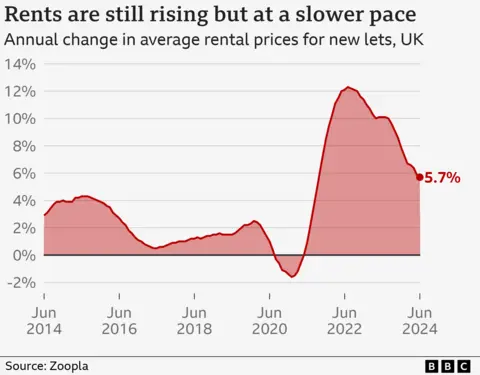Energy is now at its highest proportion in hedge fund portfolios since the beginning of the year.
Signs of demand weakness in China aren’t strong enough to discourage hedge funds from taking positions in energy.
Energy markets have kicked off the new week on the backfoot after U.S. Secretary of State Antony Blinken announced that Israeli Prime Minister Benjamin Netanyahu had accepted a cease-fire proposal to stop the war in Gaza. Blinken made the revelation on Monday after meeting with top Israeli officials in Jerusalem, and markets have lately been having a knee-jerk reaction to any news coming out of the Middle East, with oil prices tanking every time ceasefire talks are underway, only to reverse when they fail.
Crude oil futures have declined by the biggest margin in two weeks after reports suggesting that a ceasefire and hostage release deal in Gaza could be closer. Earlier, Iran had suggested a willingness to at least delay a retaliatory attack on Israel following the July 31 killing in Tehran of Hamas leader Ismail Haniyeh if Israel and Hamas agreed to a permanent ceasefire. Brent crude for October delivery was quoted at $77.11 per barrel at 12:45 hrs ET in Tuesday's intraday session, down from $81.20/barrel a week ago, while WTI crude for September delivery was trading at $73.94 per barrel compared to $78.85/barrel a week ago.
On Tuesday, Iran helped further solidify the downward trend in oil prices when a spokesperson for the Revolutionary Guards said an attack on Israel could be delayed for some time, noting that time is in Tehran’s “favor”.
Signs of demand weakness in the pivotal Chinese market are not helping matters, either. The prospect of weak demand in China is offsetting any gains from risks to supply, with government data showing that crude demand in the country fell 8% Y/Y in July.
However, the oil markets might be able to regain some momentum if the latest spate of buying by money managers continues. According to a Goldman Sachs note via Reuters, hedge funds sold industrial stocks at the fastest pace since December, while buying energy stocks for the fourth straight week last week. Energy is now at its highest proportion in hedge fund portfolios since the beginning of the year. Meanwhile, traders have been betting against passenger airlines as well as companies offering professional services, ground transportation and machinery. The latest pivot into energy stocks comes amid expectations of an interest rate cut in September.
"Global growth will be better than expected if the Fed manages to engineer a soft landing and that's probably why these traders are making the switch," Paul O'Neill, chief investment officer at wealth management firm, Bentley Reid, told Reuters.
Trump Trade
It appears that the so-called ‘‘Trump Trade’’ is still alive and well despite U.S. Vice President Kamala Harris surging in the polls ever since she replaced President Joe Biden as the Democratic candidate a month ago. Many institutional investors still give Trump the inside track, and are examining how a second Trump administration could impact everything from inflation and monetary policy to consumer spending. Investors are also betting that Trump's return to the White House would mean less regulation, a potential tailwind for heavily regulated sectors such as energy and banking.
On the contrary, Trump's recent comments about jacking up tariffs on China and requiring Taiwan to pay for U.S. military protection triggered a sell-off in semiconductor, AI and Big Tech stocks, with even heavyweights like Nvidia Corp. (NASDAQ:NVDA) taking a tumble.
However, Art Hogan, chief market strategist at B Riley Wealth, has sounded a cautionary note, "The things that get said and proposed on the campaign trail are often difficult to put into place once you get to 1600 Pennsylvania Avenue," he said.
To be fair, the Oil & Gas sector will probably do just as well under a Harris presidency, especially since she is likely to continue pushing Biden’s policies. After all, under most key metrics, the U.S. oil and gas industry has flourished under the Biden administration despite its push towards a carbon-free future, proving that not even Washington has sufficient power to single-handedly sway large, globally interconnected markets like oil and gas. Republicans have repeatedly railed against Biden’s climate policies, blaming them for compromising U.S. “energy independence” by limiting U.S. oil and gas production and raising fuel prices. Meanwhile, Trump has promised to “drill baby, drill” and restore America's energy independence.
However, Trump will have his work cut out: U.S. crude and natural gas production have both hit all-time highs under the Biden administration. According to the U.S. Energy Information Administration (EIA), crude oil production in the United States, including condensate, averaged 12.9 million barrels per day (b/d) in 2023, breaking the previous U.S. and global record of 12.3 million b/d, set in 2019. Average monthly crude oil production set a new monthly record high in December 2023 at more than 13.3 million b/d. Ironically, the current administration issued a total of 10,070 onshore drilling permits during its first three years in office compared to 9,892 under Trump over a similar period
Fossil fuel investors have hardly been complaining under Biden: energy shares have jumped 124% so far since Biden took over at the Oval Office vs.-65% decline for the comparable period under Trump.
By Alex Kimani for Oilprice.com


 BBC
BBC







